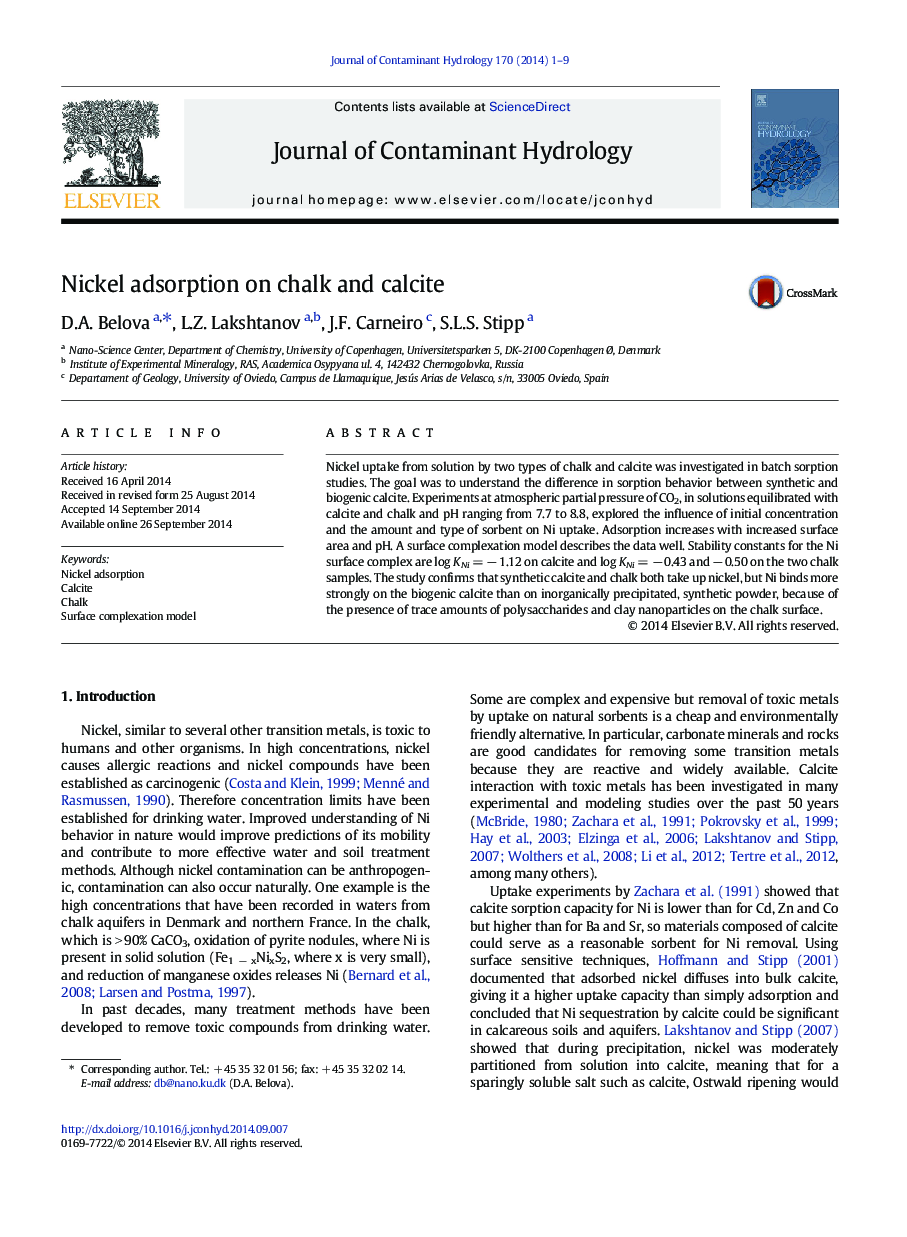| Article ID | Journal | Published Year | Pages | File Type |
|---|---|---|---|---|
| 6386472 | Journal of Contaminant Hydrology | 2014 | 9 Pages |
â¢Ni adsorption by chalk follows roughly the same pattern as nickel uptake by calcite.â¢Sorbent type, initial Ni amount and pH are the main parameters for adsorption.â¢Despite the similarities chalk and calcite have quite different sorption properties.â¢The observed difference is caused by organics and nano-sized clays on chalk surface.â¢Chalk is much more effective at removing Ni than calcite, even at pH < 8.3.
Nickel uptake from solution by two types of chalk and calcite was investigated in batch sorption studies. The goal was to understand the difference in sorption behavior between synthetic and biogenic calcite. Experiments at atmospheric partial pressure of CO2, in solutions equilibrated with calcite and chalk and pH ranging from 7.7 to 8.8, explored the influence of initial concentration and the amount and type of sorbent on Ni uptake. Adsorption increases with increased surface area and pH. A surface complexation model describes the data well. Stability constants for the Ni surface complex are log KNi = â 1.12 on calcite and log KNi = â 0.43 and â 0.50 on the two chalk samples. The study confirms that synthetic calcite and chalk both take up nickel, but Ni binds more strongly on the biogenic calcite than on inorganically precipitated, synthetic powder, because of the presence of trace amounts of polysaccharides and clay nanoparticles on the chalk surface.
